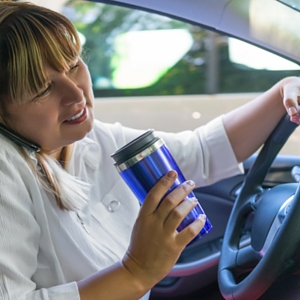Distracted Driving: It's Not Just About Cell Phones

Mobile phones have been around since the 1970s, but as they became smaller and more affordable, their popularity increased. In fact, the Centers for Disease Control and Prevention conducted a study of 21,000 households in 2015 and found that 47% of those households had dropped their landline in favor of just having a cell phone. Adding smartphones to the mix only makes these little devices even more intriguing. And because they are so small, many of us have a habit of using them on the go. Drive down any highway on any given day and you're bound to see several drivers talking on their phones, or worse—typing or reading something on them. For this reason, they are blamed for causing many accidents.
Many states are banning texting and driving, and there are all kinds of initiatives that remind people not to text or talk on the phone while driving. However, anything that takes your attention off the road—whether it's applying makeup, combing your hair, shaving, controlling the radio or car temperature, eating or drinking, dealing with kids, talking to passengers or reading a map—can cause accidents too. All of these activities fall under the category of distracted driving because all of them can cause accidents. In fact, in the U.S. in 2014, over 3,179 people were killed and an estimated 431,000 were injured in crashes involving a distracted driver, according to the National Highway Traffic Safety Administraion.
As more and more people recognize that there are a number of distractions that can cause accidents, there are more initiatives aimed at prevention of distracted driving rather than using a mobile phone and driving. The introduction of mobile phones in our society just provides us with one more distraction. Perhaps The Doors said it best: "Keep your eyes on the road, your hands upon the wheel." Do that and you'll have a better shot at being accident-free.
